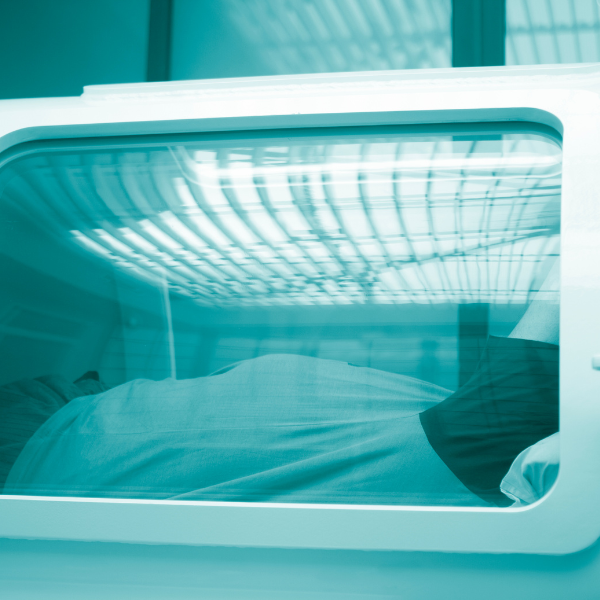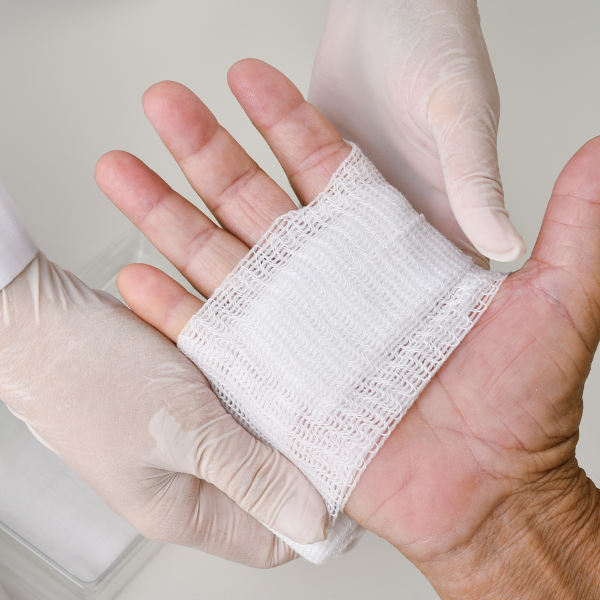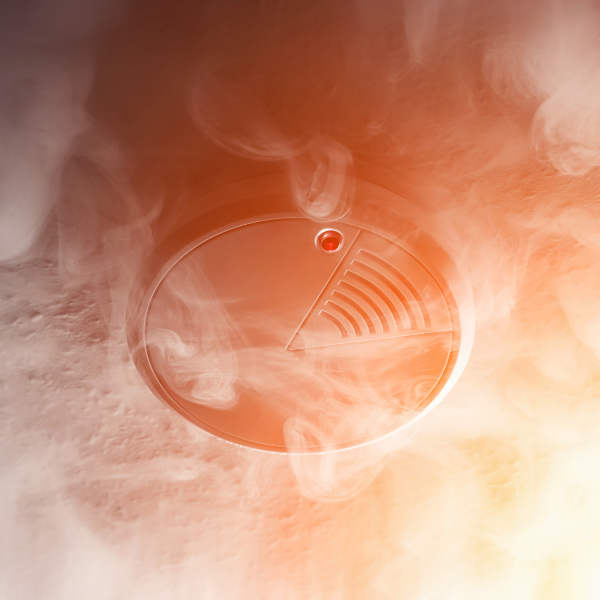Hyperbaric oxygen therapy (HBOT) is a cutting-edge medical treatment offering numerous benefits for a variety of conditions, including accelerated wound healing, carbon monoxide poisoning treatment, and radiation injury recovery. In this article, we'll delve into the science behind hyperbaric oxygen therapy, its applications, and the different types of chambers available. So, let's get started and see how this innovative therapy can improve health and well-being.
Understanding Hyperbaric Oxygen Therapy

Hyperbaric oxygen therapy (HBOT) is a medical treatment that involves the inhalation of pure oxygen in a pressurized chamber. This therapy is used to speed up the healing process for various conditions, such as carbon monoxide poisoning, gangrene, and infections in which tissues are starved for oxygen. With air pressure levels 1.3 to 3 times higher than average, the increased oxygen levels in the blood can help promote healing and reduce swelling in injured tissues.
The Process of Hyperbaric Oxygen Therapy
During a hyperbaric oxygen therapy session, patients enter a specialized chamber where they breathe in pure oxygen. The air pressure inside the chamber is increased, allowing the lungs to absorb more oxygen than they would under normal air pressure. This extra oxygen is then carried throughout the body by the bloodstream, reaching areas with reduced blood flow or damaged blood vessels. The increased oxygen levels can help stimulate the body's natural healing processes and promote the growth of new blood vessels.
Monoplace vs. Multiplace Hyperbaric Chambers
There are two types of hyperbaric oxygen chambers: monoplace and multiplace. Monoplace chambers are designed to treat one person at a time, while multiplace chambers can accommodate multiple patients simultaneously. The latter are normally used in a clinical setting and patients normally wear a hood or mask to breathe in the oxygen. Multiplace chambers may be more suitable for patients who require the presence of a healthcare provider during treatment.
Benefit 1: Accelerated Wound Healing

One of the primary benefits of hyperbaric oxygen therapy is its ability to accelerate wound healing. Injuries and chronic wounds often struggle to heal because the blood reaching the affected area is poorly oxygenated.
The Role of Oxygen in the Healing Process
Oxygen plays a critical role in the body's healing process. It is essential for cellular metabolism, energy production, and the overall function of tissues and organs. After an injury, the body requires more oxygen to repair damaged tissues and regenerate new cells. When blood flow is restricted or blood vessels are damaged, the supply of oxygen to the injured area may be insufficient, leading to slow or incomplete healing. By increasing the oxygen levels in the blood, HBOT can help promote the growth of new blood vessels to stimulate healing and also reduce swelling and inflammation.
Supporting White Blood Cells and Collagen Growth
The increased oxygen provided by hyperbaric oxygen therapy not only promotes the growth of new blood vessels but also supports white blood cell activity and collagen production. White blood cells play a crucial role in the immune system by fighting off bacterial infections and clearing away dead or damaged tissue. The hyperbaric chamber's oxygen can enhance the function of white blood cells, allowing them to work more efficiently in the healing process.
Collagen is a key component of the body's connective tissue and plays a vital role in wound healing. It provides a structural framework for the repair of damaged tissues and helps to form new blood vessels. Hyperbaric oxygen therapy can stimulate collagen growth, leading to stronger and more resilient tissue repair.
Benefit 2: Carbon Monoxide Poisoning Treatment

Carbon monoxide poisoning is a dangerous and potentially life-threatening condition caused by the inhalation of carbon monoxide gas. This gas binds to the hemoglobin in red blood cells, preventing them from carrying oxygen to the body's tissues and organs. Symptoms of carbon monoxide poisoning can include headache, dizziness, nausea, and confusion. In severe cases, it can lead to unconsciousness, brain damage, or death.
How HBOT Counteracts Carbon Monoxide Effects
Hyperbaric oxygen therapy is commonly used to treat carbon monoxide poisoning. By increasing the amount of oxygen in the blood, hyperbaric oxygen therapy helps to quickly eliminate carbon monoxide from the body, replacing it with life-sustaining oxygen.
Reducing Long-term Damage from Carbon Monoxide Poisoning
Carbon monoxide poisoning can sometimes result in delayed complications, such as delayed encephalopathy or other neurological damage, cognitive impairments, and heart problems. These conditions can manifest days or weeks after the initial exposure and cause cognitive and neurological issues. Hyperbaric oxygen therapy can reduce this long-term damage, help restore the proper functioning of these organs, and minimize the risk of long-term complications
Benefit 3: Decompression Sickness and Gas Embolism Treatment
Hyperbaric oxygen therapy is also an effective treatment for decompression sickness and gas embolism, two conditions that can occur in divers who ascend too quickly from deep water or in anyone exposed to high altitudes. Decompression sickness, also known as "the bends," occurs when nitrogen bubbles form in the bloodstream and tissues, causing pain and potentially damaging joints, nerves, and other tissues. Gas embolism, on the other hand, occurs when air or gas bubbles enter the bloodstream and block blood flow to vital organs.
The Role of Increased Air Pressure in Decompression Sickness
The increased air pressure inside a hyperbaric chamber helps to reduce the size of nitrogen and gas bubbles in the body, forcing the excess nitrogen to dissolve back into the blood and allowing it to be safely reabsorbed and expelled.
This process helps to alleviate the symptoms of decompression sickness and gas embolism, such as joint pain, dizziness, and shortness of breath. HBOT ensures that the body's tissues receive enough oxygen to function properly and heal any damage caused by the nitrogen or gas bubbles.
Preventing Long-term Complications from Decompression Sickness
In addition to providing immediate relief from the symptoms of decompression sickness, hyperbaric treatment has been shown to help preserve the integrity of the blood-brain barrier by promoting oxygenation and reducing inflammation. This preservation of the blood-brain barrier is vital in maintaining proper brain function and preventing further complications related to decompression sickness. It can also help prevent joint damage, neurological issues, and hearing loss, all of which are potential long-term complications.
Benefit 4: Treatment for Soft Tissue Infections
Hyperbaric oxygen therapy has been proven to be an effective treatment for various soft tissue infections. These infections can occur in the skin, muscles, or connective tissues and can be caused by bacteria, fungi, or other microorganisms. In some cases, these infections can lead to severe complications, such as tissue death or the spread of infection to other parts of the body.
Effectiveness of Hyperbaric Oxygen Therapy in Treating Soft Tissue Infections
By utilizing a hyperbaric oxygen therapy chamber, patients can experience increased oxygen levels in their bloodstream, which can help fight off infections. The high concentration of oxygen provided by the therapy creates an inhospitable environment for anaerobic bacteria, which are often responsible for soft tissue infections. This helps to reduce the overall bacterial load in the affected areas and supports the body's natural immune response.
Infections that are not adequately treated can lead to tissue death, the spread of infection to other parts of the body, and in severe cases, amputation or life-threatening sepsis. By providing an oxygen-rich environment, hyperbaric oxygen therapy can help to reduce the risk of these complications and support the body's natural ability to heal itself.
Benefit 5: Treatment for Radiation Injuries and Skin Grafts
Hyperbaric oxygen therapy has been shown to be effective for healing radiation injuries and skin grafts, two conditions that can result in chronic wounds and tissue damage. Radiation injuries can occur as a side effect of cancer treatments, while skin grafts are often used to treat severe burns or other skin injuries, as well as for surgical procedures.
Promoting New Blood Vessel Formation
Radiation therapy can damage blood vessels, leading to reduced blood flow and impaired healing. Similarly, skin grafts often require the growth of new blood vessels to ensure that the graft has an adequate oxygen-rich blood supply and becomes fully integrated with the surrounding tissue.
Hyperbaric oxygen therapy stimulates the growth of new blood vessels in these areas, improving blood flow to the damaged tissues and promoting healing. This increased blood flow can also help to reduce pain, swelling, and inflammation, further contributing to the recovery process.
Safety and Side Effects of Hyperbaric Oxygen Therapy
While hyperbaric oxygen therapy is considered safe for treating a wide range of medical conditions, it is crucial to consult with a healthcare professional before undergoing treatment. Some individuals may experience side effects or have contraindications that make hyperbaric oxygen therapy unsafe for them.
Contraindications and Precautions for HBOT
There are certain conditions and situations in which hyperbaric oxygen therapy may not be suitable or safe. These include:
-
Recent ear surgery or injury
-
Cold or fever
-
Certain types of lung disease
-
Uncontrolled high blood pressure
-
Pregnancy
It is crucial to discuss your medical history and any existing health conditions with your healthcare provider before undergoing HBOT to ensure that the treatment is suitable and safe for you.
Potential Complications and How to Minimize Risk
While rare, there are potential complications associated with hyperbaric oxygen therapy. These may include:
-
Trauma to the middle ear
-
Eye damage
-
Lung collapse
-
Low blood sugar
-
Sinus problems
In severe cases, oxygen poisoning can occur. To minimize the risk of complications, it is essential to follow your healthcare provider's instructions and guidelines carefully. This includes adhering to the recommended treatment duration and frequency, as well as reporting any side effects or concerns to your healthcare provider promptly.
Choosing the Right Hyperbaric Oxygen Chamber for You
When considering hyperbaric therapy, selecting the right hyperbaric chamber to suit your needs and preferences is essential. When choosing a chamber, consider the size, type (monoplace or multiplace), and features such as pressure settings and additional amenities.
Airpuria offers a variety of hyperbaric oxygen chambers designed to cater to various needs, preferences, and budgets. With a team of dedicated professionals available to assist throughout the entire process, Airpuria ensures customers receive the best possible service and support.
Doctor's Notes for HBOT
Airpuria always requires a doctor's note when purchasing any hyperbaric chamber. Simply upload your prescription or doctor's note using the file upload option, or email it to sales@airpuria.com, and our dedicated team will guide you through the process. By obtaining a prescription or doctor's note, you'll gain access to valuable insights and recommendations tailored to your unique needs, ensuring a truly personalized HBOT experience.
Frequently Asked Questions about Hyperbaric Oxygen Chambers
How long does a hyperbaric oxygen therapy session typically last?
Sessions can last from 45 minutes up to 120 minutes, depending on the condition being treated and the recommendation of your healthcare provider. On average, most treatments last between 60 and 90 minutes.
Is hyperbaric oxygen therapy safe?
While generally considered safe, there are some risks and potential side effects associated with hyperbaric oxygen therapy. These may include ear or sinus pain, changes in vision, claustrophobia, and, in rare cases, oxygen toxicity or a collapsed lung. To minimize these risks, it is essential to follow your healthcare provider's instructions and guidelines carefully and report any side effects or concerns promptly.
Does hyperbaric oxygen therapy have FDA approval?
The FDA has cleared the use of HBOT for many conditions including chronic wounds, sudden idiopathic hearing loss, skin and bone infections, and much more. It is essential to consult with your healthcare provider to determine if HBOT is suitable for your specific condition.
Is hyperbaric oxygen therapy covered by insurance?
Most insurance companies do not cover HBOT treatments, which is why it can be beneficial to purchase one for your home. Coverage may vary depending on your specific insurance plan and the condition being treated. It is recommended to contact your insurance provider to confirm coverage and any potential out-of-pocket costs associated with HBOT.
Financing Options for Hyperbaric Oxygen Chambers
Airpuria understands that investing in a hyperbaric oxygen chamber can be a significant financial commitment. To help make this investment more affordable, Airpuria offers financing options for both individuals and businesses.
Individuals who qualify can enjoy 0% interest rates for up to 18 months, while business owners can apply for special financing programs tailored to their needs. Explore these financing options through the following links:
-
Financing for individuals: https://www.7figures.app/Airpuria
-
Financing for businesses: https://reliantcapitalgrp.com/airpuria

